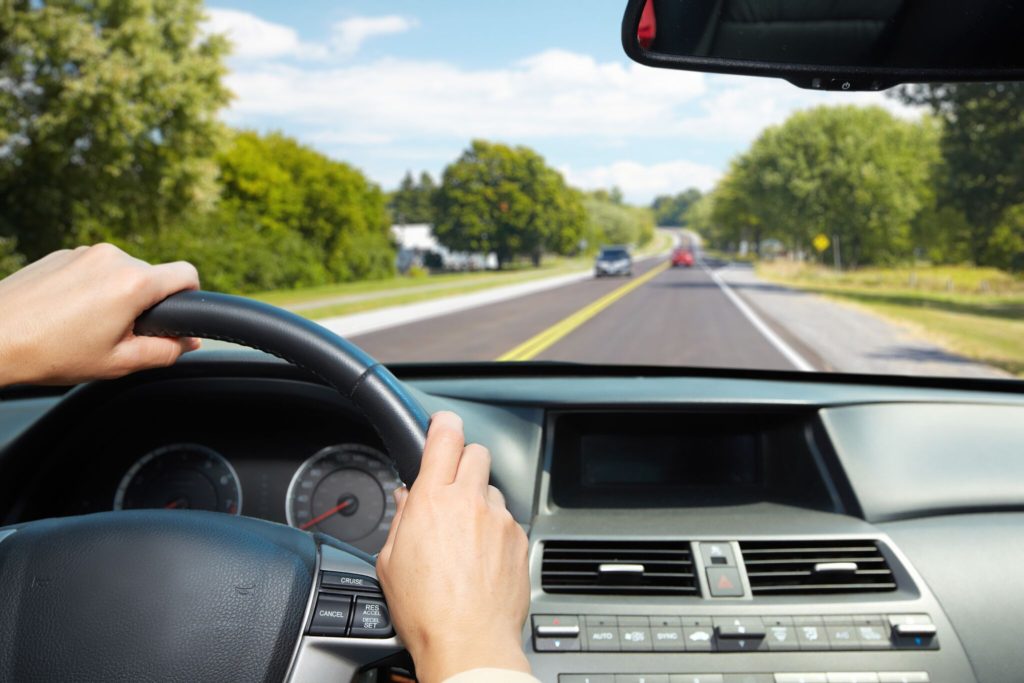VEHICLES, VEHICLE LOANS & BANKRUPTCY OPTIONS
INDIVIDUALS WITH ENOUGH INCOME TO FILE CHAPTER 13 MAY BE INELIGIBLE TO FILE CHAPTER 7
 KEEPING YOUR VEHICLE IN CHAPTER 7 IF IT IS PAID FOR – You can file Chapter 7 and retain a vehicle that is paid for depending on how much the vehicle is worth, and who is listed on the title. The present exemption in Utah is only $3,000 per person for one motor vehicle, so if your vehicle is paid for but worth more than $3,000, you might lose it to a Bankruptcy Trustee. Big no-no is to sell or transfer a vehicle or other asset out of your name prior to filing. You could, however, sell it in an arms-length transaction for what it’s actually worth. You should discuss options regarding your vehicles with an attorney before doing anything.
KEEPING YOUR VEHICLE IN CHAPTER 7 IF IT IS PAID FOR – You can file Chapter 7 and retain a vehicle that is paid for depending on how much the vehicle is worth, and who is listed on the title. The present exemption in Utah is only $3,000 per person for one motor vehicle, so if your vehicle is paid for but worth more than $3,000, you might lose it to a Bankruptcy Trustee. Big no-no is to sell or transfer a vehicle or other asset out of your name prior to filing. You could, however, sell it in an arms-length transaction for what it’s actually worth. You should discuss options regarding your vehicles with an attorney before doing anything.
KEEPING YOUR VEHICLE IN CHAPTER 7 IF YOU ARE IN THE PROCESS OF BUYING IT – If you are in the process of purchasing a vehicle and want to retain possession of your vehicle, you can still file a Chapter 7 bankruptcy (if you are eligible), eliminate as much of your other debt as possible, and retain possession of your vehicle. You cannot eliminate the debt against your vehicle however, as Creditors who finance automobiles generally retain title to the vehicle until it is paid in full. If you desire to retain a vehicle you are in the process of paying for, you must take the following steps:
- FILE A STATEMENT OF INTENTION – Under Section 521(a)(2) of the Bankruptcy Code, Debtors are required within 30 days of filing their bankruptcy petition, to specify their intent to either surrender, redeem, or reaffirm a debt secured by their vehicle. (Note: Statements of Intention are generally filed with the statements and schedules you file with the Court when you initiate your bankruptcy case.)
- PERFORM YOUR INTENTIONS – Not later than 45 days after the first meeting of creditors, Debtors must either SURRENDER or REDEEM the vehicle, or enter into a REAFFIRMATION AGREEMENT with respect to the underlying debt. See Section 521(a)(6). Somewhat inconsistent with the previous Section cited, Section 362(h) provides that if you fail to perform your stated intention within 30 days of the first meeting of creditors, the automatic stay will be terminated (with certain exceptions), permitting a car creditor to repossess your vehicle — therefore, you should either SURRENDER, REDEEM or enter into a REAFFIRMATION AGREEMENT within 30 days after the first meeting of creditors, and not wait 45 days.
- REAFFIRMATION – You can execute a new agreement with a car creditor under the terms of which you agree in writing to continue to make payments to the Creditor. Depending on the Creditor, the Creditor may agree to reduce the balance owing on your car and/or the interest rate, or bring you current if you are behind in payments, as part of a reaffirmation agreement. Entering into a reaffirmation agreement is a serious financial decision which you should evaluate carefully and discuss with your attorney. Under the Bankruptcy Code, an extensive set of disclosures are required for any reaffirmation agreement in Section 524(k). You will also be required under this Section to demonstrate that you have sufficient income available to pay the debt which is to be reaffirmed. Your attorney will assist you with the reaffirmation agreement and required disclosures.
- REDEEM – You have the absolute right in bankruptcy to purchase your vehicle from a car creditor for an amount equal to the cost of replacing the property, without deducting costs of sale or marketing, and if the vehicle was purchased for personal, family or household purposes, then the replacement cost will be the retail price for property of similar age and condition. For example, if a car lot or other retail merchant could sell your car for $3,000 putting it on the market, but you owe $6,000 on it, you can acquire it from the creditor for $3,000 if you can come up with the funds to purchase it. There is no bankruptcy mechanism in Chapter 7 to force a car creditor to finance the redemption. You may be able to borrow funds to redeem a vehicle and certain lending institutions provide financing to individuals in bankruptcy who desires to redeem their vehicles. The interest rates tend to be high however.
PREVENTING REPOSSESSION AND CRAM DOWN IN CHAPTER 13
 If you are behind in payments on your vehicle loan, a Chapter 7 bankruptcy filing can temporarily protect your vehicle from repossession. From the instant you file your Chapter 7 case with the bankruptcy court, the automatic stay prevents Creditors from taking action of any kind to repossess your vehicle without Court permission; and if they have already repossessed your vehicle, they are prohibited from selling it without further Court order. If you have filed a previous case within one year of the current filing which was dismissed, the automatic stay terminates within 30 days of filing as to leases and secured creditors. (The Court may extend the stay after a hearing under certain circumstances.) If your vehicle was repossessed, you can get it back if you file Chapter 13, but not Chapter 7.
If you are behind in payments on your vehicle loan, a Chapter 7 bankruptcy filing can temporarily protect your vehicle from repossession. From the instant you file your Chapter 7 case with the bankruptcy court, the automatic stay prevents Creditors from taking action of any kind to repossess your vehicle without Court permission; and if they have already repossessed your vehicle, they are prohibited from selling it without further Court order. If you have filed a previous case within one year of the current filing which was dismissed, the automatic stay terminates within 30 days of filing as to leases and secured creditors. (The Court may extend the stay after a hearing under certain circumstances.) If your vehicle was repossessed, you can get it back if you file Chapter 13, but not Chapter 7.
If you are behind on your car payments, you can file Chapter 13 and the vehicle loan can be paid through a Chapter 13 Plan based on either what you owe or what the vehicle is worth based on what it’s worth and other factors your attorney can discuss with you.
Re-writing Debt against Vehicle Loans, AKA Cram Down. If you purchased a vehicle over 2.5 years prior to the date of filing a Chapter 13, you can re-write the debt against the vehicle in Chapter 13. Specifically, if your vehicle is worth less than you owe on it, you can re-write the debt to pay only what the vehicle is worth and not what you owe on the vehicle. For example, if your vehicle is only worth $5,000 and you owe $10,000 on it, you can re-write the debt to pay the creditor $5,000 through a Chapter 13 plan. The remaining $5,000 would be included in your Chapter 13 discharge.
If your vehicle is repossessed, you can file Chapter 13 bankruptcy and recover possession of the vehicle provided it has not been sold by the creditor.
If you have had a prior bankruptcy case dismissed within a year prior to the current bankruptcy filing, there is no automatic stay. (Again, the Court may impose the automatic stay after a hearing under certain circumstances.) As discussed above with regard to reaffirmation agreements and redemptions in Chapter 7, if you fail to perform your stated intentions concerning your vehicle within 30 days of the meeting of creditors, the automatic stay terminates automatically.
DISCLAIMER
NO INFORMATION CONTAINED HEREIN IS INTENDED TO CONSTITUTE LEGAL ADVICE, AND IS NOT APPLICABLE TO ANY SPECIFIC SET OF FACTS, ESPECIALLY AS TO ANY INDIVIDUAL’S PERSONAL SITUATION. THE INFORMATION CONTAINED HEREIN NOR THE PERUSAL OF IT DOES NOT ESTABLISH NOR CONSTITUTE AN ATTORNEY-CLIENT RELATIONSHIP WITH UTAH BANKRUPTCY PROFESSIONALS OR ANY OF ITS ATTORNEYS. THE INFORMATION SET FORTH ABOVE IS BASED ON NEW BANKRUPTCY LAWS WHICH BECAME EFFECTIVE OCTOBER 17, 2005 KNOWN AS THE BANKRUPTCY ABUSE PREVENTION AND CONSUMER PROTECTION ACT OF 2005 (BAPCPA). BECAUSE OF THE COMPLEXITY OF THE NEW LAWS, PLEASE REFER TO THE ACTUAL BANKRUPTCY CODE AND RULES AND/OR CONSULT WITH A BANKRUPTCY PROFESSIONAL TO EVALUATE THE APPLICATION OF THE ABOVE INFORMATION TO YOUR SPECIFIC SITUATION. (UPDATED NOVEMBER 17, 2005.)
For more information on Vehicles, Vehicle Loans 7 Bankruptcy In UT, a free initial consultation is your next best step. Get the information and legal answers you are seeking by calling (801) 432-8682 today.

